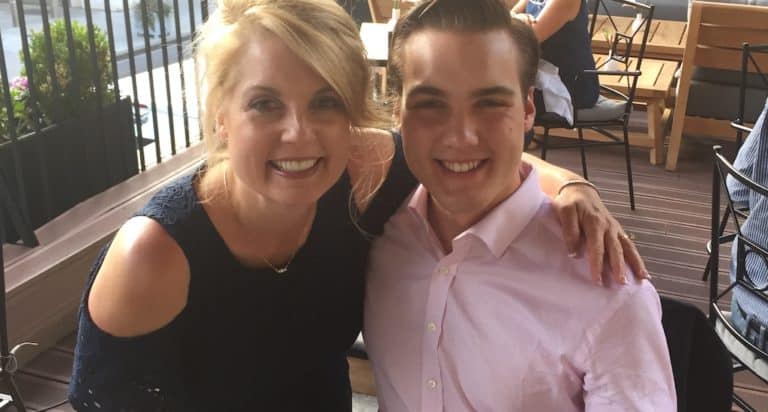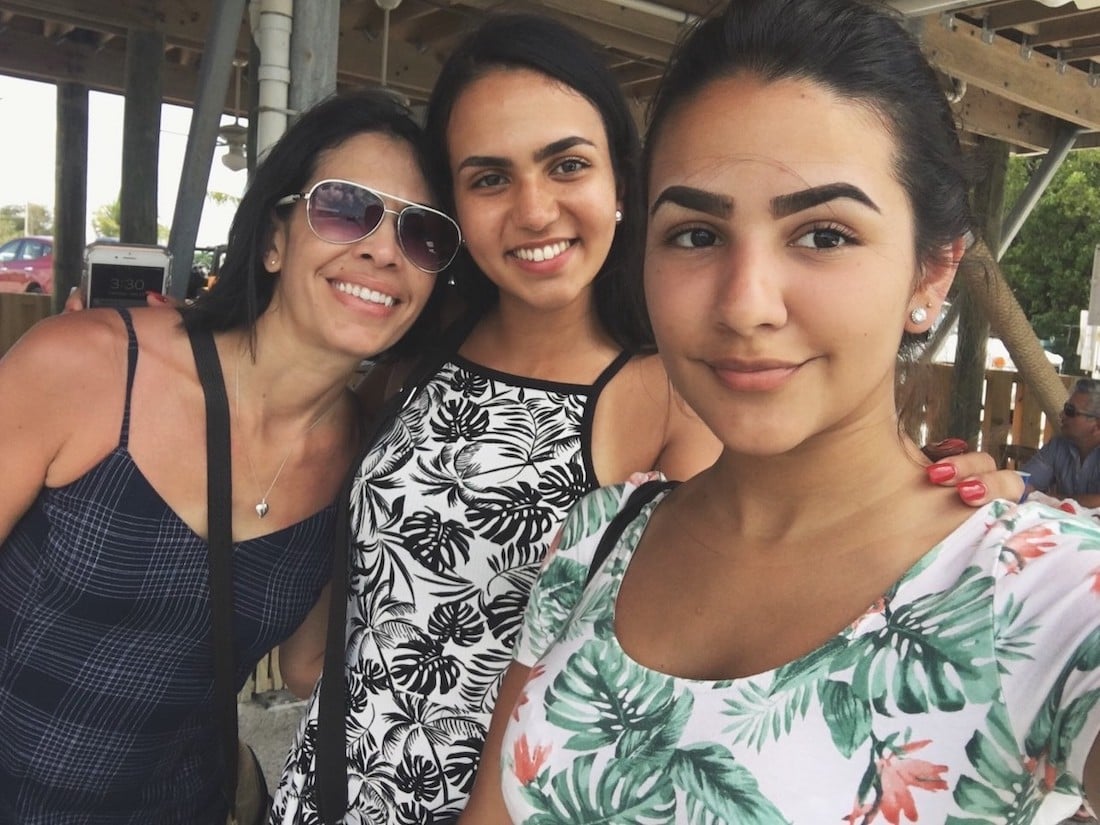I’ve talked to several parents who are struggling to convey the urgency of good hygiene and social distancing to their teens. One parent told me his 14-year-old boy snuck out the other day to ride bikes with his friends. Another parent told me her son, who is home from college, keeps going over to his girlfriend’s house, putting his elderly grandmother who’s living with them at risk.
And just yesterday, I saw a group of teen girls huddled together in the park. As one parent complained, “They’re just not getting it. They’re not taking it seriously at all. But I just don’t know how to get through to them.”

Social distancing is brutal for teens
It’s not because they don’t care; it’s that many don’t grasp how something so simple as riding bikes or hanging out in the park with their friends can put themselves or anyone else in danger. So why don’t some of our teens get it?
They’re healthy, it’s beautiful outside, they miss their friends, and staying home is boring.
Most adolescents believe they are invincible. They may see bad things happen to other people, but they never think that those bad things could happen to them. So, no matter how many people get sick, it’s difficult for them to comprehend that they could get sick too. And, even if they did, why would it matter? They’re young and healthy so they’re not going to die from it, right?
Teens also are naturally more egocentric than adults. Not necessarily in an “I’m all that” sense of the term, but in a way that makes it difficult for them to see things from a perspective different from their own. From their point of view, they’re not sick, their friends aren’t sick, they don’t think they’ll get sick, so what’s the big deal? It may be difficult for them to comprehend how their actions affects others.
And their friends mean EVERYTHING to them. Try to remember how important your friends were to you when you were a teen. For many teens their world centers around them. There’s a reason for that. Peer relationships are critical to healthy social development. During adolescence we choose our friends based on common interests, similarities, and values.
When we’re teens our friendships define and shape us; they give us a sense of belonging; they make us feel significant and accepted. Realize that being isolated from friends is far harder for teens than it is for the rest of us.
Finally, teens are not about to accept a vague explanation or do something just because we told them to. They need a reason that makes sense, especially if we expect them to give up so many things that matter to them like hanging out with friends, seeing their boyfriend/girlfriend, going shopping, grabbing coffee, playing sports, even going to school. Otherwise they’re going to push back and do the exact opposite of what they’re told just because they can.
How can parents convey the urgency of social distancing to teens?
So, how do we convey the urgency of social distancing to our teens in a way that motivates them to be responsible but doesn’t scare the living daylights out of them? Each child is different, so only you know how much information your teen can handle and what will help get the point across, but here are a few things that are important to relay:
1.This is not about you. You might not think you’re going to get sick, or care if you do, but social distancing isn’t about protecting you and me. It’s about protecting everyone else. It’s about protecting older people like your grandparents. It’s about keeping little babies safe. It’s about making sure kids that are already sick don’t get sicker.
Every time you come into contact with someone outside your immediate family, you are increasing the chance that someone else’s loved one will get sick.
2. You are not in this alone. It may feel like you’re the only one isolated from your friends, but kids across the entire world are having to stay at home. That means there are about 2 billion other kids are also feeling frustrated and stuck too.
3. It’s not forever. Yes, chances are we’re going to have to live like this for a few months, which may feel like an eternity. But eventually life will go back to normal. Possibly even by this summer. How soon this ends depends a lot upon how many of us are responsible about keeping our distance right now. The sooner we all take action, the sooner this will be over.
4. This virus is spread from person to person. The virus rides on tiny mucus droplets that fly out when we sneeze, cough, even spit when we’re talking. There are two ways we can get the virus from someone else: breathe it in when we talk to them or touch something they’ve contaminated like a doorknob or handrail then touch our face with our “contaminated” hand.
Because it’s highly contagious, the more people you’re around, the greater your chance of getting the virus. It’s like tossing a stone into the water. If one person gets it, it creates a ripple effect that spreads it far and wide.
5. The goal is to slow down how fast the virus spreads. If we throw one stone into the water at a time, the ripples quickly die out and very little is impacted. But if we throw a bunch of stones in at once we stir up the entire lake. It’s the same way with the virus. If too many people get sick at the same time, it causes a bigger impact. And we don’t have enough hospitals, staff, nurses, doctors, medicine, and equipment to take care of everyone at once. That means a lot of people would have to go without care and many of them will die.
The only way to make sure as few people suffer as possible is slow the spread of the virus down as much as possible. The sooner we all distance ourselves, the less of an impact the virus will make.
6. You can’t tell who has the virus. People can have the virus for three or more days before they know it or show it. So, someone we think is safe may actually be extremely contagious. This is why the virus is spreading so fast and another reason we have to keep our distance from everyone.
7. You have two choices. You must decide if you’re going to help slow the virus down and save as many lives as we can or if you’re going to help spread the virus and put more lives at risk. Those are the only two choices you have. Do you want to help slow it down or spread it faster?
To slow the virus down, tell your teens what they need to do
Wash your hands—a lot. If you touch something that is contaminated, the only way to get the virus off your hands is to wash them with soap and water for 20 seconds (approximately the time it takes to sing your ABCs.) Washing your hands is THE very best thing you can do to prevent the virus from spreading–especially after blowing your nose, coughing, or sneezing; going to the bathroom; and before eating or preparing food.
Since viruses can live at least 24 hours on plastic, cardboard, and metal surfaces it’s smart to treat everything you touch outside your home as if it has the virus on it and wash your hands before touching your face. When you do, don’t forget to scrub your fingertips and thumbs!
Keep your distance. It’s important to stay at least six feet away from everyone (including your friends). The only people you can get close to are your immediate family living under the same roof. Why six feet apart? Because, when you sneeze or cough without covering your mouth, it sprays about six feet. That means anyone within six feet of you can get hit by your nasty mucus droplets or you can get hit by theirs—and the virus could be taking it for a joy ride right into your face.
Even if we breathe within 3-6 feet of someone our air mixes with theirs, and if one of us has the virus, chances are the other one has it now too. This is why it’s so important to social distance–it’s the only way to ensure we’re staying six feet away from everyone and keeping ourselves and everyone else safe.
Cover your mouth. Always cover your mouth and nose with a tissue or the crook of your arm (not your hand) when you cough or sneeze. It stops those mucus droplets from spraying all over everyone and everything around you. This is how you prevent any flu or cold from spreading, so it’s a good habit to get into anyway.
Don’t touch your face. Avoid touching your face as much as possible, especially before washing your hands. If you touch something that has the virus on it then touch your eyes, nose, or mouth, you’re making it easy for the virus to get into your body. If you must scratch your nose, use a part of your arm that hasn’t been in contact with anything yet.
Here is what a parent can do to help their teen adapt to the new normal
Even when they understand why the need to stay at home, it’s still not going to be easy. Here are some ways you can help your teen adapt to this new “normal”:
1.Be empathetic. It’s important to recognize and acknowledge how difficult this is for your teen. Sure, other people have it worse, but that doesn’t make it any easier for your teen. Listen to your teen. Give them space to express their anger, sadness, and fear. They have a right to feel that way. Resist the urge to lecture, moralize, or repress their negative emotions. Just listen and nod. You can also share with them how you deal with your stress so they can learn how to cope from you.
2. Provide structure. Maintain a sense of normalcy and combat overwhelming boredom by creating a daily schedule. Create it with your teen and use it to help them find a balance between being productive (schoolwork, skill development, chores) and having down time (socializing with friends, watching TV, sleeping, playing games.) Also encourage them to fit in some exercise every day and to get a good night’s sleep.
3. Understand their need to be online. Many teens crave social interaction. If we want to keep them inside, it’s important to enable other ways for them to talk with their friends. If you’re concerned about what they’re doing, talk about what is appropriate and not appropriate to share online. Become familiar with the apps they’re using.
Many teens are adapting by having FaceTime sleepovers, long video chats, watching movies as a group through Netflix Party, and gathering virtually on social networks like House Party. Help them set the necessary safety parameters and let them know you’ll be asking them to show you what they’ve been doing online from time to time. Always be transparent about what you do so they learn from it rather than rebel and circumvent your restrictions.
4. Let them go outside. My daughter and I take a long walk every day to get fresh air and some exercise. I love seeing all the other families out walking and enjoying time together outside.
5. Make time for offline family time. It may not feel like it, but this unexpected time with your teen is a true gift. I encourage you to enjoy this downtime together and use it to strengthen your connection (rather than being at each other’s throats).
6. Encourage them to give back. Just like the virus, kindness has a rippling effect too. The more nice things we do for others, the faster and wider kindness spreads. Not only will volunteering help conquer your teen’s boredom and sense of helplessness, it also will help hardwire their brain with skills and behaviors essential for life success and happiness: compassion, generosity, empathy, and commitment. They will also learn that even they can make a real difference in the world—and have fun doing it!
The next few months or so will not be easy, but they don’t have to be difficult when it comes to your teens. I encourage you to take advantage of this unexpected time together and use it to strengthen and grow your family connection. You’ll reap the benefits for years to come.
More to Read:
Social Distancing: 30 Things Your Teen Can Do Alone or With the Family
The Hardest Part of Parenting is Watching Our Teens Make Mistakes









